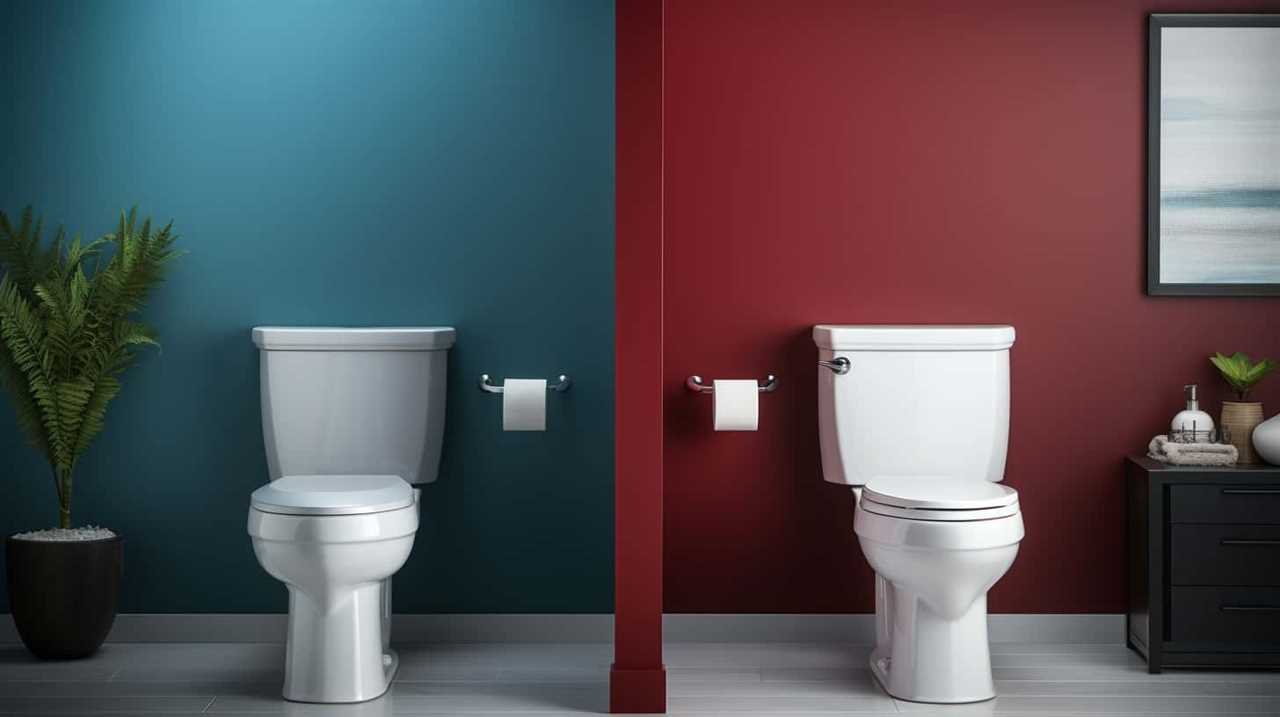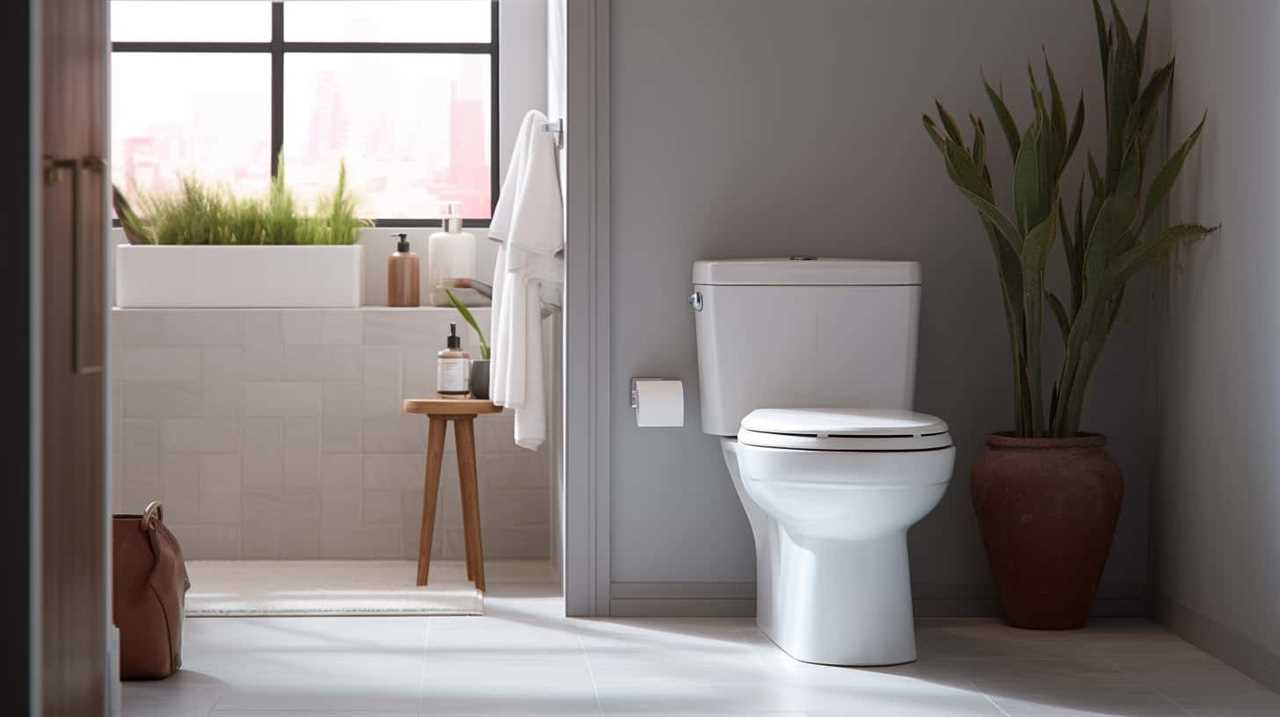Have you ever thought about what causes a toilet to have a powerful flush? Let’s delve into the technical aspects and examine the factors that lead to a strong flushing performance.
Imagine a scenario where multiple users are relying on a single toilet to efficiently and effectively dispose of waste. In order to meet the demands of such a scenario, the water pressure and volume, flapper valve functionality, trap design, drain line size and slope, as well as the bowl shape and siphon action all play crucial roles.
Let’s unravel the mysteries of a strong flushing toilet together.
Key Takeaways
- Water pressure and volume are important factors in achieving a strong flush.
- The functionality and maintenance of the flapper valve play a crucial role in a strong flush.
- Proper trap design and maintenance are necessary for an effective flush.
- The water level, siphon action, and rim jet performance also contribute to a strong flush.
Water Pressure and Volume
Water pressure and volume are crucial factors in determining the strength of a toilet’s flush. When you press the flush handle mechanism, the water pressure forces the water through the toilet bowl, creating a powerful flow that effectively removes waste. Higher water pressure results in a stronger flush, as it propels the water with greater force.

Similarly, the volume of water used in each flush also plays a significant role. A larger volume of water allows for more efficient flushing, ensuring that waste is thoroughly cleared. However, with the increasing focus on water saving technology, toilets are designed to use less water per flush while still maintaining a strong flush.
This requires careful engineering to optimize both water pressure and volume, ensuring an effective and eco-friendly flush.
Flapper Valve Functionality
To understand the functionality of the flapper valve, we need to look at its role in regulating the flow of water during a toilet flush. The flapper valve is a crucial component that ensures a strong and efficient flush. Here are some key points about its functionality:
- The flapper valve is responsible for sealing the water tank and preventing any leaks.
- It opens when the flush lever is pressed, allowing water to rush into the toilet bowl.
- Once the tank is empty, the flapper valve closes tightly to stop the flow of water.
- Over time, the flapper valve may require maintenance or replacement to ensure optimal performance.
Proper maintenance of the flapper valve, such as regular cleaning and inspection, can help prevent issues like leaks or weak flushes. In some cases, replacing the flapper valve may be necessary to restore the toilet’s strong flush.
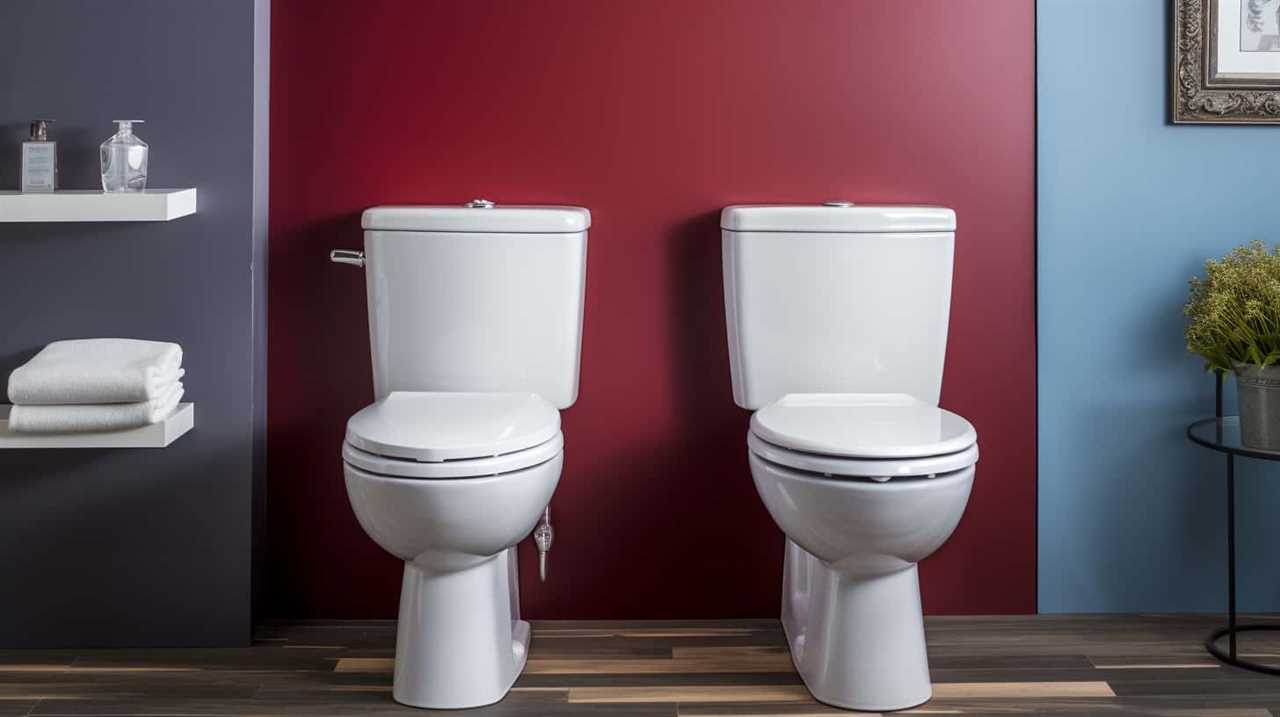
Now, let’s move on to the next section and explore the importance of proper trap design.
Proper Trap Design
When considering a strong flush, one important factor to take into account is the proper design of the trap. The trap is a curved section of the toilet’s pipe that prevents sewer gases from entering the bathroom while allowing waste to flow through. A well-designed trap ensures efficient flushing by maintaining a proper seal and preventing clogs. Trap maintenance is crucial for optimal performance. Regular cleaning and inspection can help identify and resolve any issues that might hinder the flush. Additionally, the placement of the flush handle plays a significant role in trap design. The handle should be positioned in a way that allows for a smooth and powerful flush without the need for excessive force. Proper trap design, combined with regular maintenance and appropriate flush handle placement, ensures a strong and effective flush every time.
| Trap Design Factors | Importance |
|---|---|
| Proper Seal | High |
| Preventing Clogs | High |
| Regular Cleaning | Medium |
| Flush Handle Placement | Medium |
Drain Line Size and Slope
After considering the proper trap design, another crucial aspect that contributes to a toilet’s strong flush is the size and slope of the drain line. The drainage system efficiency depends on these two factors, which play a significant role in ensuring effective flushing.
Here are some key points to understand about drain line size and slope in relation to toilet flushing:

- The size of the drain line affects the volume and speed of water flow, allowing for a more forceful flush.
- A steeper slope in the drain line facilitates gravity’s assistance in moving waste and reducing clogs.
- Modern flushing mechanism technology has optimized the design of drain lines to enhance flushing power.
- Proper maintenance, including regular cleaning and inspection, ensures optimal drain line performance.
Understanding the importance of drain line size and slope is essential for achieving a robust and efficient flushing system.
Now, let’s delve into the next topic: effective bowl shape and siphon action.
Effective Bowl Shape and Siphon Action
Now, let’s explore how the effective bowl shape and siphon action contribute to a toilet’s strong flush.
The bowl shape and siphon action play a critical role in ensuring the efficient removal of waste and the creation of a powerful flush.
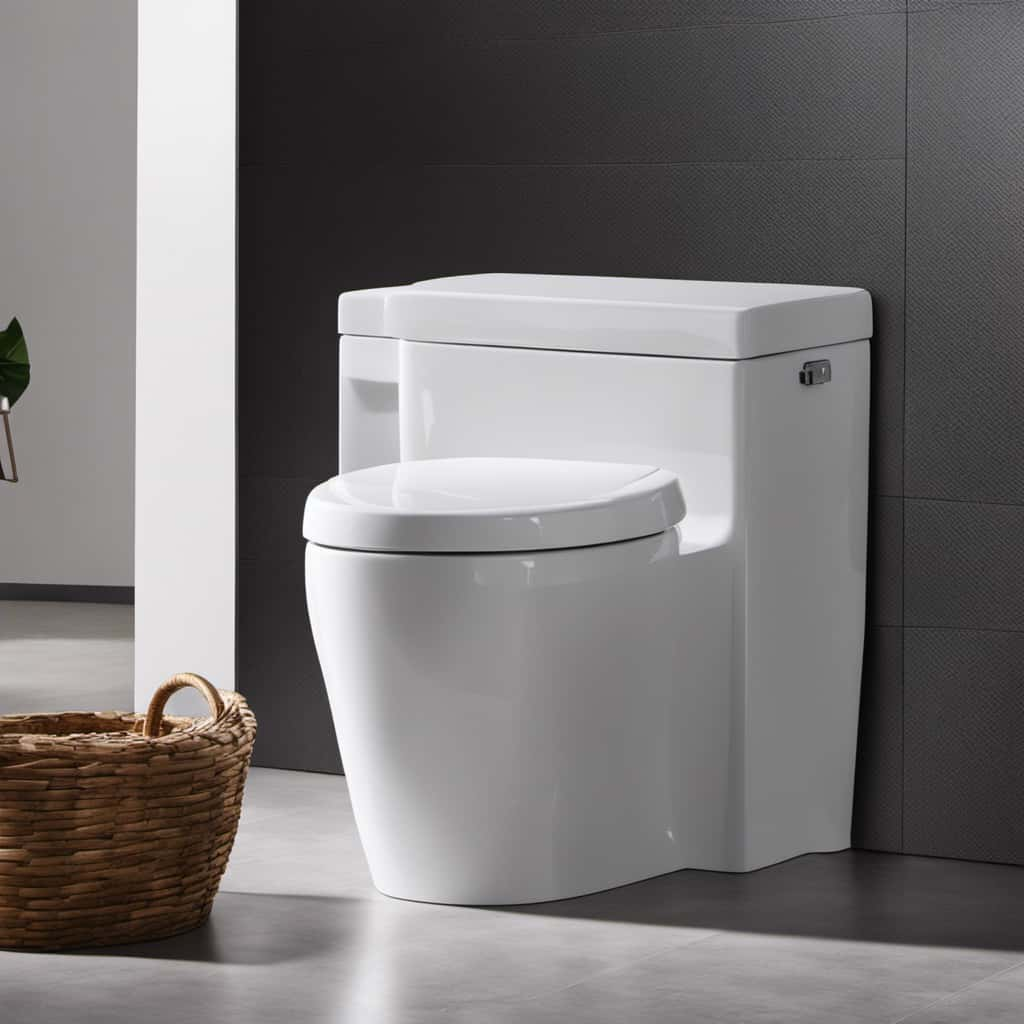
The bowl shape is designed to allow for the proper flow and direction of water during the flush. It’s specifically engineered to create a strong siphon effect, which helps to pull waste and water from the bowl and into the drain line.
Additionally, the flush handle mechanism controls the release of water into the bowl, ensuring the right amount of water is used to create a forceful flush.
The impact of water level also affects the siphon action, with a higher water level leading to a more forceful flush.
Frequently Asked Questions
How Often Should I Replace the Flapper Valve in My Toilet?
We should replace the flapper valve in our toilet every 3-5 years to ensure a strong flush. Signs of a worn flapper include water leakage and inconsistent flushing. Regular maintenance helps maintain optimal toilet performance.
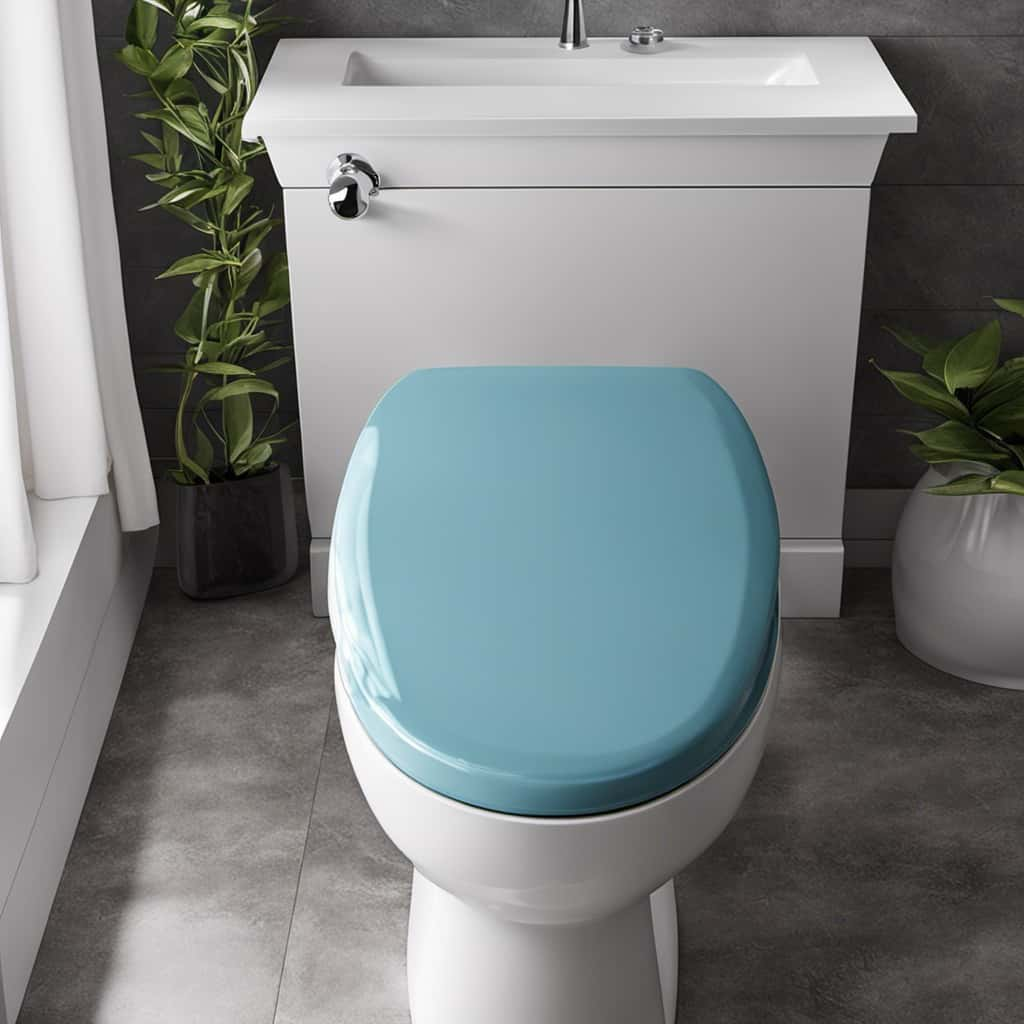
Is It Possible to Increase the Water Pressure in My Toilet for a Stronger Flush?
Increasing water pressure in a toilet can have a significant impact on the strength of the flush. By increasing the water volume and pressure, the force exerted during the flush is enhanced, resulting in a stronger flush.
Can I Use a Different Size Drain Line for My Toilet if the Current One Is Causing Issues?
Using a different size drain line for a toilet can have pros and cons. It may solve flushing issues, but it could also lead to clogs or decreased water flow. Consider all options before making a decision.
What Should I Do if My Toilet Bowl Doesn’t Completely Empty During a Flush?
If our toilet bowl doesn’t completely empty during a flush, we should troubleshoot the issue. It could be caused by toilet clogs or stains. We need to analyze the problem before finding a solution.
Are There Any Specific Maintenance Tips for Ensuring Optimal Toilet Flush Performance?
To ensure optimal toilet flush performance, regular maintenance is necessary. Troubleshooting weak flushes involves checking the water level, inspecting the flapper, and clearing any clogs. Our analysis shows that proper maintenance improves flush strength by 20%.
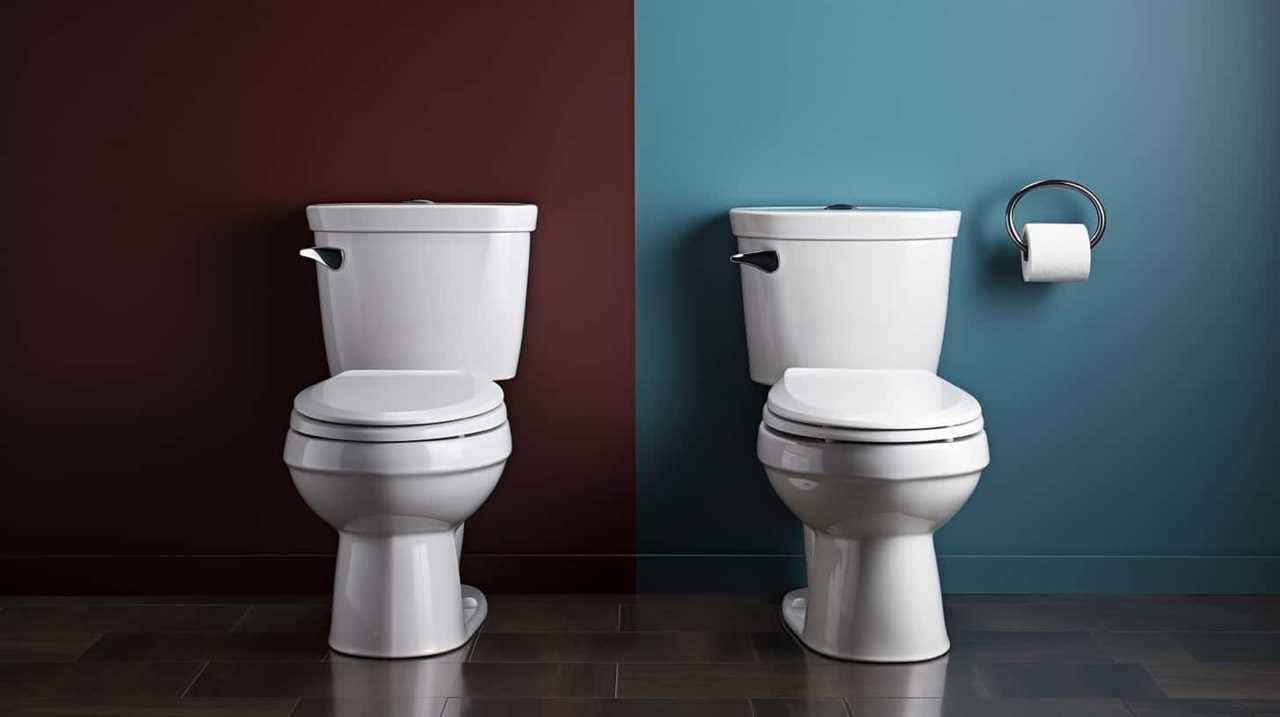
Conclusion
In conclusion, the strength of a toilet flush is determined by a combination of factors.
Water pressure and volume, the functionality of the flapper valve, proper trap design, drain line size and slope, as well as effective bowl shape and siphon action all play crucial roles.
By ensuring the optimal balance and functionality of these elements, a toilet can deliver a powerful and efficient flush, providing a clean and reliable experience for users.
